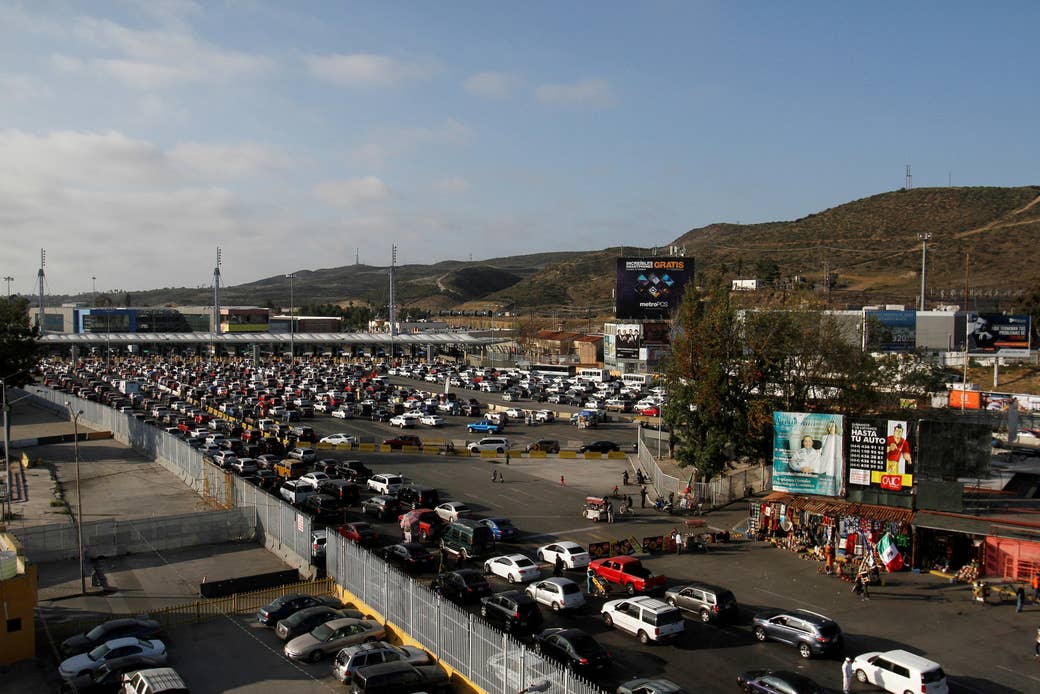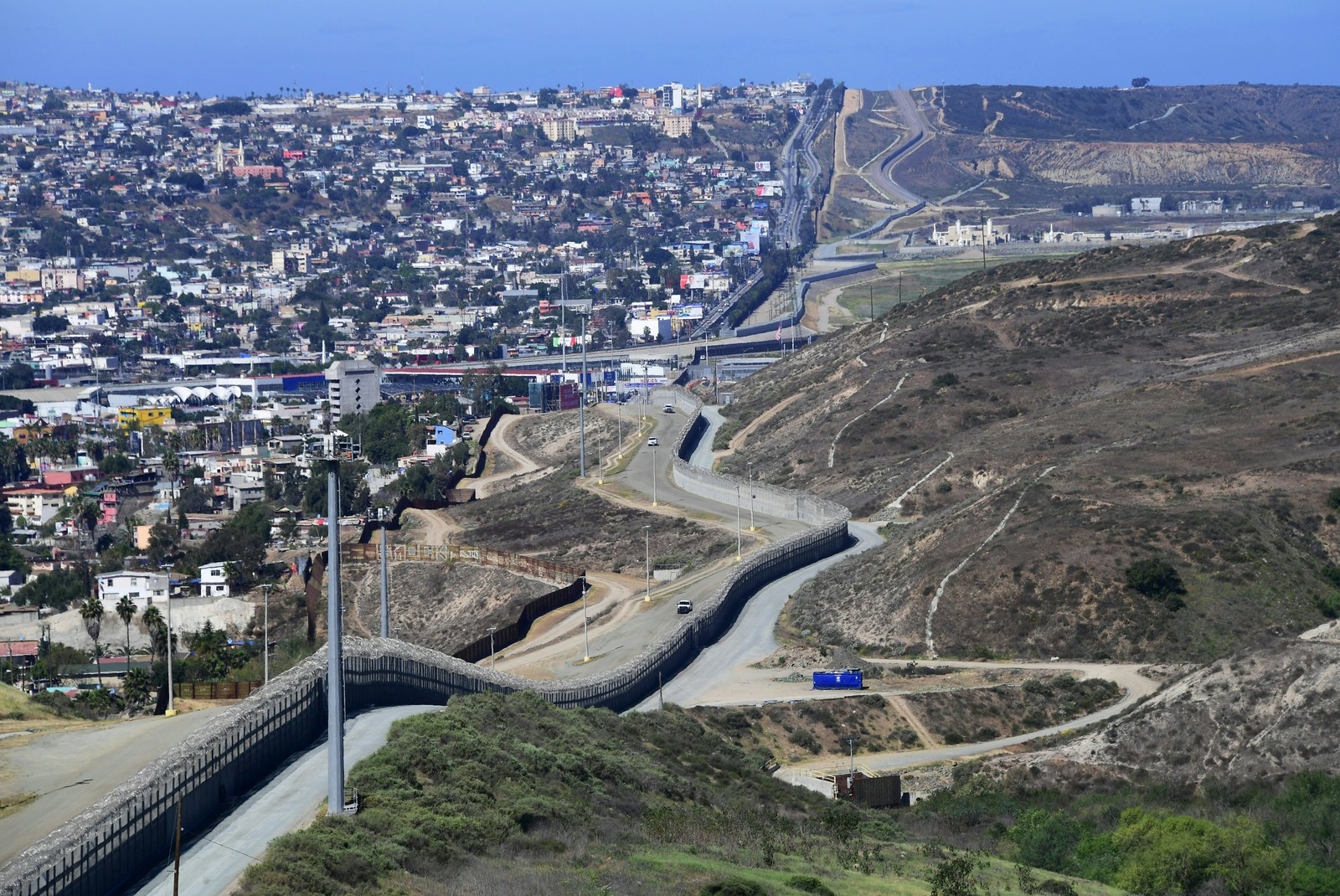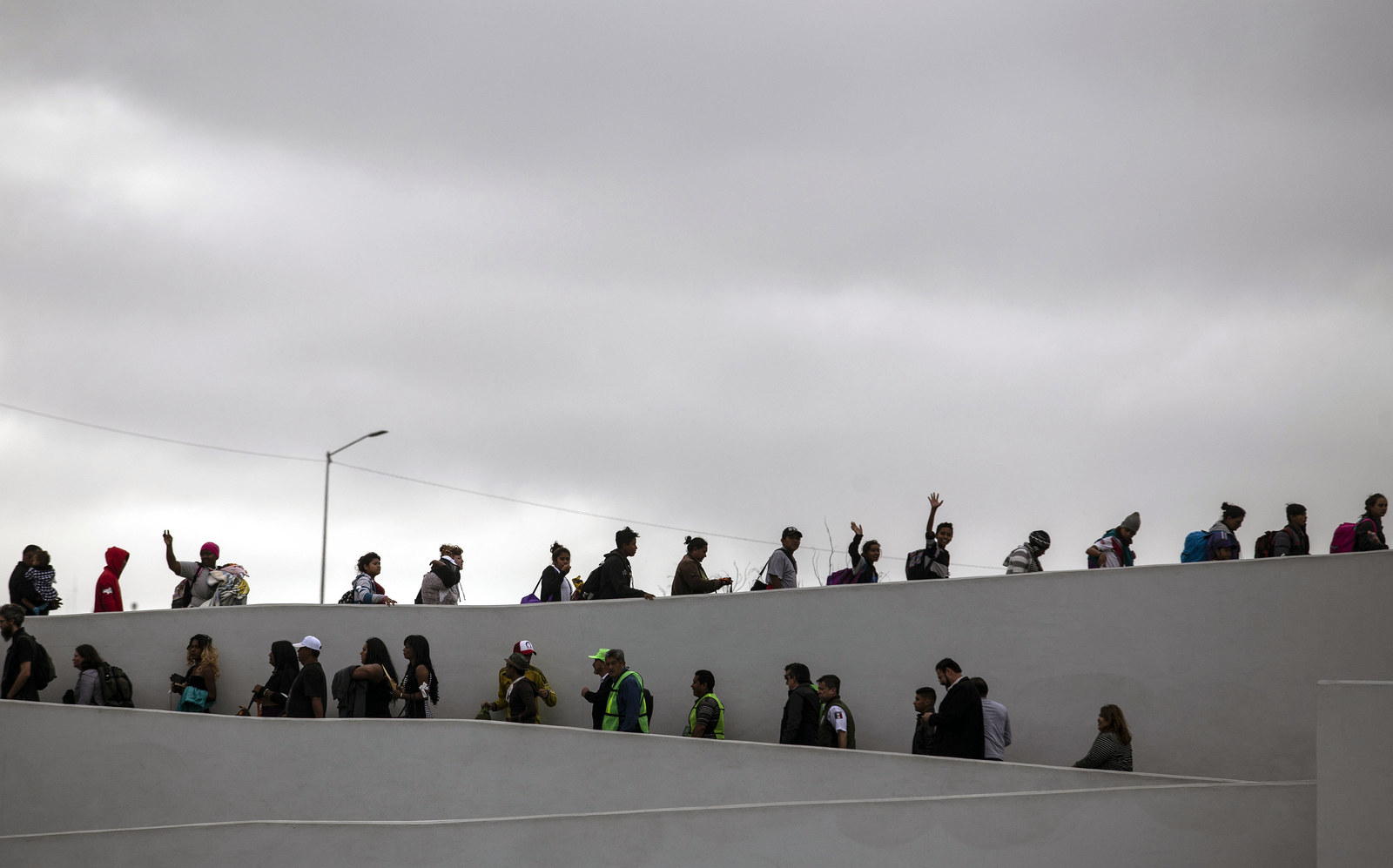
I’m an American citizen who was born screaming and velvety-haired from my Mexican mother’s body in Chula Vista, California, a suburb of San Diego whose name translates to “beautiful view” in Spanish. Those beautiful views were actually made up of the typical markers of Southern California suburbia — miles of stucco tract housing, taco shops, lifted trucks, and garage kickbacks where Bud Light in a can is the drink of choice. This was the backdrop of my early, mundane Mexican American upbringing.
While my parents may have never said it explicitly, the US was the ultimate symbol of progress and opportunity for them, even though they also had deep pride for their own heritage and culture. Still, signs of their internalized racism were evident in many ways.
Sometimes it was obvious, like in the way my mom encouraged me to cover my face in Concha Nacar, a cream that bleached my skin. And sometimes it was subtle, like in the way they fully bought into the Southern California American dream, with its peach stucco two-story tract homes. I was 5 when they bought their brand-new American dream house. Home movies show me running excitedly through the hollow structure that would soon be filled with late ’80s rattan furniture, the scent of my mom’s cooking, and Rocío Dúrcal’s voice coming out of the stereo.
By 12, 30 years after they immigrated to the US, my Mexico-born parents moved us to Tijuana. My mom had been injured at her housekeeping job in San Diego and my dad was able to retire early from his retail job thanks to some smart investing. It was no surprise that the house they built in Tijuana mirrored their American dream home. Even though he had a sixth-grade education, my dad codesigned it with an architect, and I recall him saying how he wanted it to look like something you’d see in America. It was a symbol of progress that embodied their status as Americans, even as Mexicans.
Our “beautiful view” of Chula Vista was replaced with a view overlooking the busiest land border crossing in the world — the San Ysidro Port of Entry. At 4:30 every morning, my alarm jolted me awake along with sounds of the border, blaring car horns and hollers from street vendors, which bled through my bedroom window.
Whenever I leaned against the window screen to check the US point of entry, which ran right below our house, my face would be smudged with dust from the rows of cars. I’d squint, looking at the sea of headlights that brightened the dark early morning, stretching a mile long up and over a small bridge that led to the border checkpoint, indicating how long my commute would be. Though we’d moved, I still went to school in the US. Staying in school in South San Diego would mean an easier time when applying for colleges, not being hindered by language barriers and, most importantly to me, not being teased by the kids in school for being a pocha (a Latinx person who speaks broken Spanish or Spanglish). Our car would be just one of the roughly 70,000 cars that pass through that border every day, and I was just one of the thousands of students that spent hours waiting to get to our schools on the other side.
The border is the literal line that set off my code switch.
I had grown up spending lots of weekends and school breaks in Tijuana. It’s where I broke my arm jumping off my tía’s roof, played Lotería in my tata’s kitchen with all my loud tías and cousins and ate pozole at bustling cenadurías with my family. But now it was home for good, and the transition was difficult. I switched to a school closer to the border, one that was a bit rougher than I was used to. I had to learn to fistfight just in case anyone wanted to jump me, and my fellow eighth-graders would talk about their 18-year-old boyfriends and going on birth control. Meanwhile, I rocked a Hawaiian Punch mustache and was too scared to hold a boy’s hand.
Each morning on the way to school, I applied my eyeliner and put in my contacts while eating spoonfuls of my mom’s sweet avenita. As we inched closer to the checkpoint, I’d silently practice my answers for Border Patrol: “US citizen”; “nothing to declare.”
The border is the literal line that set off my code switch. The way you speak and behave as you approach the checkpoint slowly shifts. I’d see people throw trash out their window on one side but never dare to do that on the US side, letting me know exactly what they thought of my home. I began the struggle with my identity, and the feeling of being both, an other on both sides. We have a saying, “Ni de aquí, ni de aya.” Not from here nor there — Mexican and also American; a privileged Whitesican and also a “wetback.” With Mexicans in the US who are second, third, or more generations in, there’s sometimes hostility as to who the “real” Mexicans are.

The border is hectic and harsh. Glaring fluorescent lights from huge street lamps and billboards with seminude women advertising plastic surgeons’ offices beam through your windshield as elderly indigenous women tap on your window begging for change. Dust-covered children juggle toy balls. Vendors sell curios, piggy banks, and soft blankets with the image of a strangely sensual panther on them, and you try not to look too much or else they’ll follow you incessantly until you give in. There are burritos, chile-covered fruit, and Tostilocos to keep you fed during those long hours. Some stands have been owned by the same family for three generations. This space that inflicts so much pain also gives people their entire livelihood.
My mom would have regular panic attacks during our daily morning crossings, triggered by the frustration of waiting in so much chaos. Our move to Tijuana coincided with her fall into depression and deep anxiety, which exacerbated the border crossing experience for her and made it somewhat scarier for me as a young girl worried about her mom. Just changing lanes could be terrifying, since some drivers scream at you if you try. Once a driver was so mad at another for not letting them get into their lane that they got out of their car and started smashing the other car’s windows. I’d feel guilty for drinking a bottle of water; I’d seen and heard of people wetting or defecating themselves in their cars and had some very close calls myself.
When my mom had a stroke, I lay in the backseat holding her hand as my dad tried to cut to the front of the line to get her to a hospital, since she had American insurance. I was 16 and terrified that I was about to lose my mom. She tearfully said goodbye to me just in case. Luckily my dad was able to get her across and to the ER in time before irreparable damage was done, and she eventually recovered. It’s just one moment that made me realized the border could be the space between life and death.
But we had it better than so many. We had the choice. We could cross, if we wanted to. There’s abject poverty and despair staring into your eyes, asking for help, and you have to drive right past them. The weight of their pain is heart-wrenching, but compartmentalized into a part of your brain so it doesn’t crush you. It becomes routine.
For many Americans, particularly white ones, images of crying children kept in cages and sobbing parents pleading with ICE officers to not take their babies away have functioned as a horrible wakeup call about the plight of Mexican and Central American immigrants. But for those of us who have lived on the border, horrors like this have been part of our daily routine and struggle for years.
Not all of us made it to the other side or benefit from the privileges that come with our ability to pass.
While waiting in those seemingly endless lines, I would look over to the other side of the border — where people enter Mexico — and see a line of deportees being dropped off by Border Patrol agents and walking through the gates in defeat. Their clothes were covered in dirt, and sometimes they crossed back holding a small bag or carrying nothing at all. Sometimes they crossed back with their children clinging to them. In certain sections of Tijuana, border fences are covered in crosses in memory of those who didn’t make it.
We were all right next to one another — the kids going to school, the grown-ups heading to work, the poor begging for the quarters in our cupholders, the sun-stroked deportees being escorted through the metal gates, the tired moms holding their children in the pedestrian lanes, the people with disabilities holding signs asking for help, the vendors trying to make their quota to put food on the table that evening — staring up at the same border crossing. But not all of us made it to the other side or benefit from the privileges that come with our ability to pass. Even recently, I asked a distant cousin if he’d be going to our other cousin’s wedding in LA. “Yo no cruzo,” he said. I don’t cross. It was an embarrassing reminder.
It didn’t fully dawn on me as a young girl thinking about school dances and AP exams that there was death, degradation, and sorrow surrounding me. The proof was there, but early on I was trained to look away by my parents as a means of protection to make crossing more bearable. But they couldn’t shield me forever.
When Border Patrol agents question you, it feels like they’re questioning your very existence. Who are you? Why are you here? What are you bringing back? Where do you live? Where were you born? Open your trunk. What’s in here? Stay in your car. Get out of your car. Fine, you can go. It often comes from agents who look like me, with last names similar to mine, but who had somehow crossed to the side that didn’t see me as their own.
When I was 15, an agent suspected there were drugs in our car. The day before, my sister had smoked some weed in her car so a drug-sniffing dog was all over it. She and I were taken to secondary inspection, and I was separated from her. It was probably only an hour, maybe two, but I was scared and worried, unsure of where my sister was and if anything bad was happening to her. An officer patted me down. I was taken to a private room and forced to pull down my underwear to prove I was on my period and not smuggling cocaine in my Always medium-flow maxi pad. Apparently, this is a practice they still carry out.
And during another crossing, we watched as the body of a man who was likely undocumented was lifted off the freeway after being hit by a car. This is a somewhat common occurrence on the freeways close to the US–Mexico border in San Diego and San Ysidro, California. So much so that yellow caution signs emblazoned with the silhouetted image of a family running peppered the freeways for years, warning people of undocumented folks running across, though they have been removed over time. My mom and sister were in the car with me, and we all shared the same horror. I can still see the dead man’s brown, calloused hands, lightly crusted with dried blood, as the officers picked him up to place him on a stretcher. They looked like my dad’s hands. Years later, when I held my dad’s hands after he died, I remembered the hands of that undocumented man.

After dealing with stressful levels of scrutiny, tragedy, and abasement at the border, I had to lie to my teachers about where I lived every day, otherwise I faced getting kicked out of school, and would lose my shot at going to college in the US. Needing to lie added to the shame I was developing about where I came from. After 9/11, it got worse: With the founding of ICE, and tighter control at the border, just getting to homeroom on time required hours of commuting and seemingly endless questions. We became not only possible “illegal aliens” or drug smugglers, but also possible terrorists.
My parents and I endured these regular indignations and anxieties to get to el otro lado, the other side. We thought: That’s just the way it has to be.
In those early years, I dealt with it all. It took a long time to quiet the hateful noise of those who’ve attempted to shame me for my family and my culture — and to raise my voice above it.
It took a long time to quiet the hateful noise of those who've attempted to shame me and my family and my culture.
My breaking point came in college when a white kid from Orange County in the dorm room next door offered me quarters to iron his shirts as a joke, and when my then-boyfriend asked why my family would regress by going back to Mexico after living in the US. They clearly saw me and where I came from as less than. I started to understand that the border — this arbitrary line in the ground with walls raised around it — speaks volumes to the world about Mexicans and Central Americans. It was speaking to me too, working hard to convince me I was less than. Those moments lit something inside me.
The San Ysidro Port of Entry still stands, evolving into a more brutal and unwelcoming structure over the years, and is still under construction with new border walls along the barrier between the two countries. Lately, there are more crowds of people waiting to be seen as a large caravan of people seeking asylum from Central America arrives in both Tijuana and nearby Mexicali. People sit and sleep there until their name is called. The food vendors have also changed since the influx of Haitian refugees has brought new residents to Tijuana from the Caribbean island. There’s also a heavier presence of police and the National Guard.
During a recent crossing, I saw men wearing vests that read “Police Task Force” on them taking turns snapping pics of one another between the rows of cars. The waits are still long, and the anxieties and tragedies remain.
When I come down to Tijuana from LA, where I now live, to visit my mom who still lives in her American dream home, or my eldest sister, who now has a home of her own, I know I haven’t lost mine. My mom and I cross together to run her errands. She, like me and thousands of others, lives a binational and bicultural life. Crossing the border has never been easy, and it’s gotten still harder to bear, as we watch more families waiting to see if they’ll be allowed refuge in the US and greater vilification of Latinx people by the president and his followers. The pressure is heavier, and everyone — not just us — can see it.
Now that I’m a 34-year-old woman, I look at my mom when I sit in the passenger seat of her car and thank the universe I was never torn away from her on one of those daily crossings. That I never had to experience the excruciating pain and horror that comes from losing my family. And I physically hurt and cry for those who have.
As a journalist, I now interview people on the border to share the realities of the space and those who inhabit it. People who are just working hard to survive and have lost loved ones in the process. People who stand under the hot sun alongside waiting cars looking for a chance to build a new life in the US far away from the homes they had to escape from. It’s from these people that I find another form of resistance. I get to tell their stories, and I get to tell mine. ●
